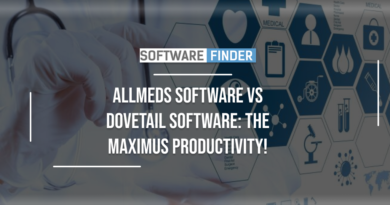What’s the reason for the shortages of Adderall and Ozempic?
Experts see no way to resolve the shortages of drugs such as Adderall in the United States. This can lead to treatment delays, medication changes and other complications when filling a prescription.
Recent shortages have been caused by unexpected spikes in demand, manufacturing issues and a tight supply of ingredients. This has put parents, doctors and patients under stress. In the case of some drugs, such as stimulants used to treat ADHD, several factors have contributed to a shortage. It is difficult to predict when this will end.
Long-standing shortages, especially of generic drugs, are a problem. Since the industry has consolidated, some manufacturers are less motivated to resolve shortages as generics at low prices generate small profits.
Take a closer look at this issue.
How many drug shortages are there?
According to the University of Utah Drug Information Service, 301 national drug shortages were active through the first quarter of this year. This is 49% more than the 202 drug shortages recorded in the first quarter of 2018.
Stephen Schondelmeyer is a professor at the University of Minnesota College of Pharmacy. He said that patients might not feel the effects of drug shortages if doctors can use different medications or if other parts of the drug supply system mask the problem.
He said, “But now there are more shortages and they’re more visible.”
Which drugs are in short supply?
In the fall, the U.S. Food and Drug Administration announced a shortage of the attention-deficit/hyperactivity disorder treatment Adderall due to a manufacturing problem. This has continued and, at times, grown to include other stimulants which treat the condition.
Erin Fox, a researcher at the University of Utah Health, says this situation appears to be improving. But this medication’s most popular extended-release form still needs to be supplied.
The FDA has also tracked a shortage in the diabetes treatment Ozempic. Doctors prescribe Ozempic for weight loss. According to IQVIA, the number of prescriptions for Ozempic, which celebrities and others have promoted on social media, has doubled since the summer of 2021.
According to a Novo Nordisk spokeswoman, the drug is now available in all dosages at all pharmacies across the country.
A spike in respiratory illness forced drugstore chains last year to limit the purchase of fever-reducing medicine for children. Around that time, there was also a shortage of amoxicillin.
According to a report by Sen. Gary Peters (D-Mich.), chairman of the Senate Committee on Homeland Security and Governmental Affairs, injectable drugs used in hospitals and clinics, such as IV saline and certain cancer treatments, are twice as likely to be affected by a shortage as tablets or topical treatment.
Why do drug shortages develop?
A variety of factors causes many shortages.
Adderall’s manufacturing problems grew as the number of people taking Adderall increased.
During the pandemic, prescriptions increased as regulators allowed doctors to prescribe the medication without seeing the patient first. According to IQVIA, Adderall drugs and their generic equivalents were increased by 20% between February 2020 and the end of 2018.
Adderall supply is further challenged when demand increases. The drug is controlled, so federal regulators restrict the collection yearly.
Some drugs may also have a price.
Ozempic, a drug for diabetes. Semaglutide is the same medication that’s sold under Wegovy for weight loss. Schondelmeyer said that the price per milligram for Wegoby is more than double what it would be for Ozempic.
Schondelmeyer st, “at “they’ve had a rush on Ozempic because people don’t want to spend so much on Wegoby.”
Novo Nordisk’s spokeswoman, Allison Schneider, said the product price was unrelated to shortages. She attributed it to global supply and demand constraints.
Fox explained that another factor contributing to shortages is that medications like Adderall or amoxicillin are low-profitable, so companies have no incentive to store and make large quantities in case of a need.
She said that once a shortage begins with a product you made just in time, it is difficult to solve until all suppliers return.
How are patients affected by drug shortages?
Treatment delays can harm patients with cancer, who are often time-sensitive.
Sometimes doctors are forced to prescribe alternative medications that may need to be more efficient. This can also lead to medication mistakes if the doctor needs to know the alternative medicines.
Patients may also need more prescriptions or have to search for a nearby pharmacy with enough stock to fill them.
Future Prospects
Partly because measuring demand is difficult, it can be hard to predict when shortages will be resolved.
Mike Ganio is the senior director of pharmacy practices and quality at the American Society of Health-System Pharmacists. “But will that be enough?” he asked.
Conditions that could lead to future shortages are still present. The Senate expressed concern about excessive reliance on foreign sources in its report.
Most raw materials for American drugs are produced in factories in China and India. India limited exports of finished medicines and active pharmaceutical ingredients made from these chemicals early in the COVID-19 epidemic to protect its domestic drug supply.
Deficiencies can persist for years. Patients can find it difficult to obtain reliable information. Fox stated that there is no requirement under the law for drugmakers to update the public.
The Senate report states that “no federal agency, private industry partner or other entity has complete visibility of the U.S. Pharmaceutical Supply Chain.”
Fox said the shortage of stimulants has been frustrating. The federal government claims that companies aren’t using their existing raw materials.




